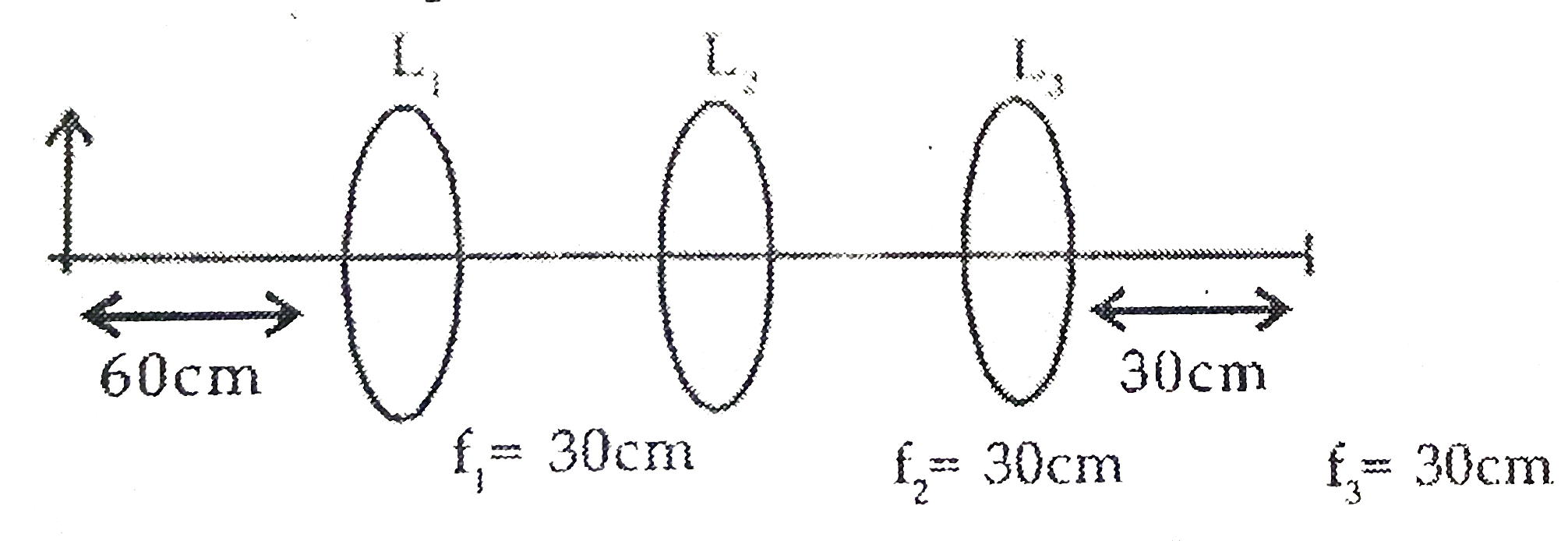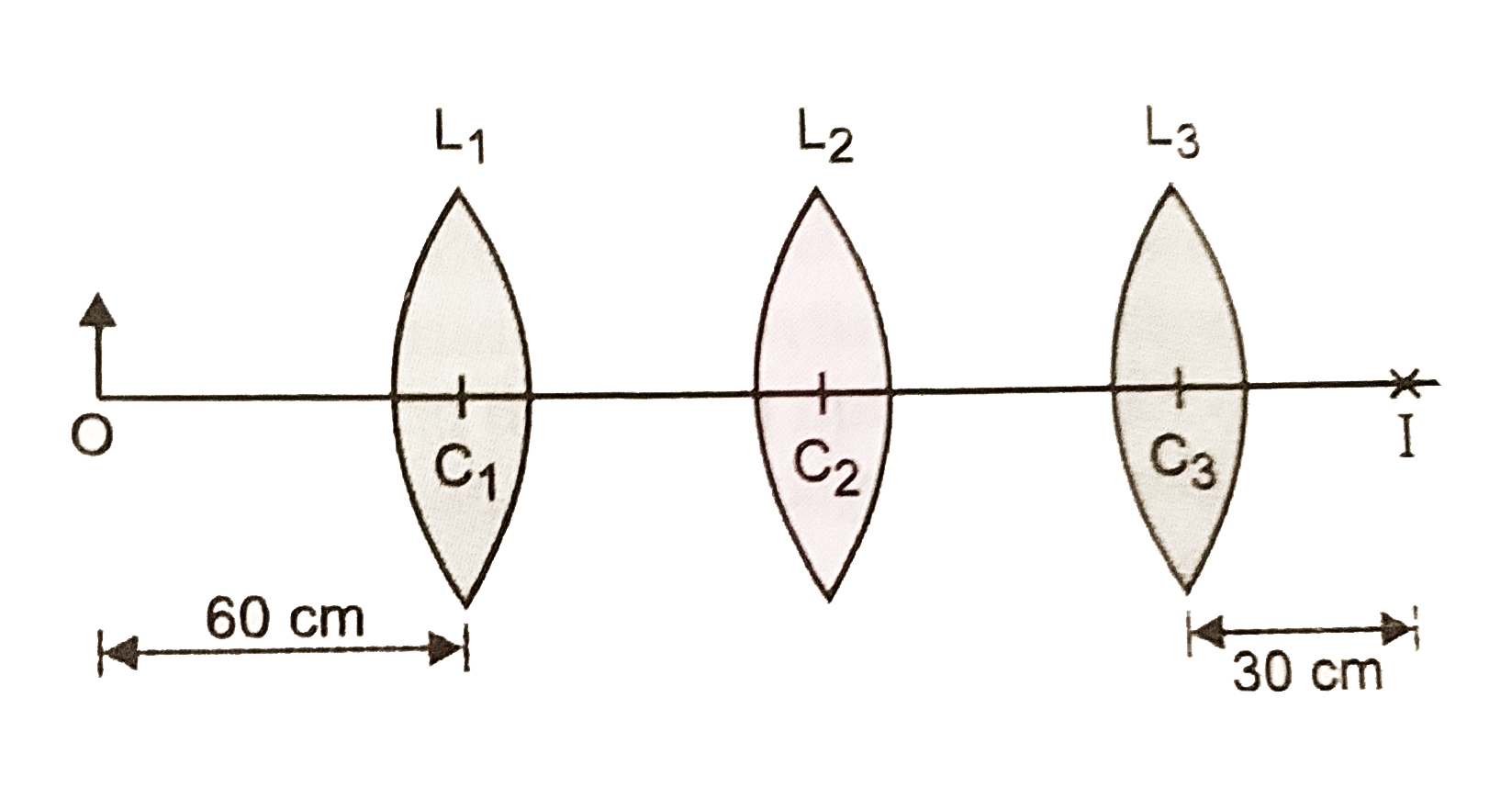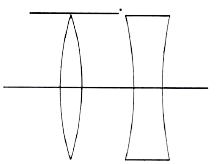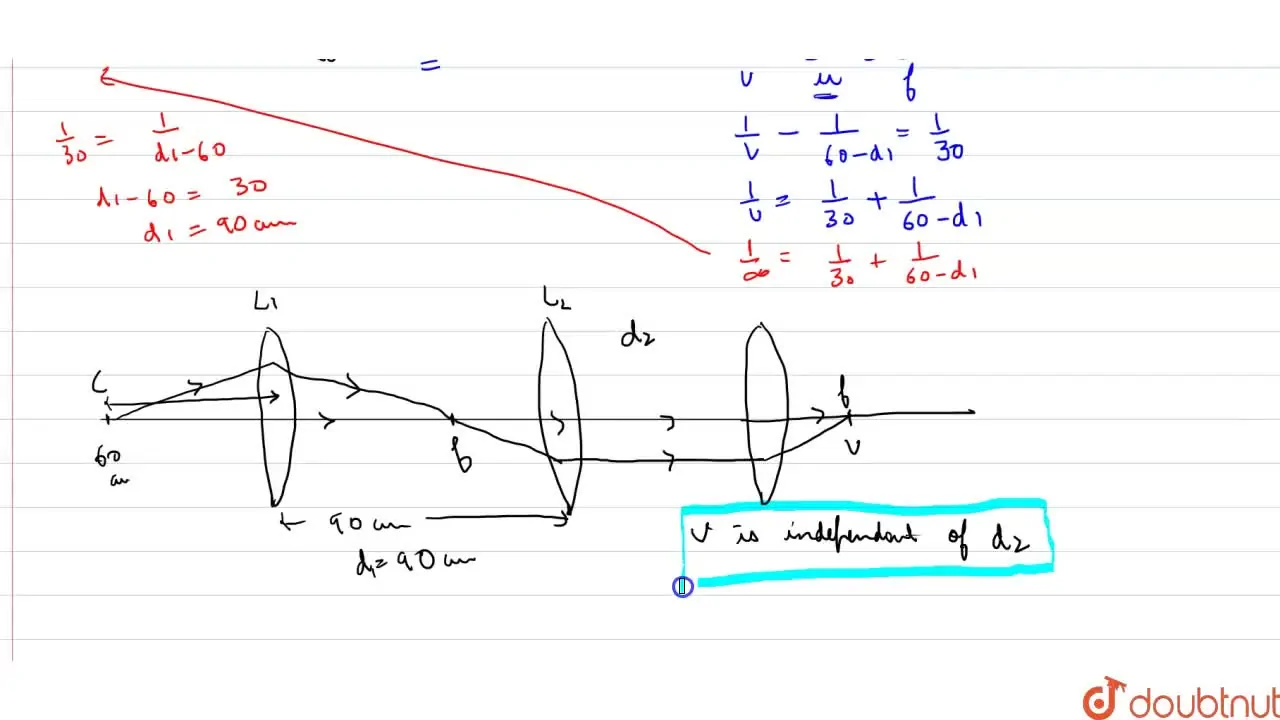(a) Explain with reason, how the power of a diverging lens changes when (i) it is kept in a medium of refractive index greater than that of the lens, (ii) incident red light is replaced by violet light.
(b) Three lenses each of focal length 30 cm are placed co-axially as shown in the figure. An object is held at 60 cm from the optic center of lens . The final real image is formal at the focus of . Calculate the separation between (i) .
(a) We have
given
As we know power [Power of diverging lens is negative]
negative f is negative so it will diverge
(ii) We know as the wavelength of red light is greatern than violet light. So, the power of lens for red light is less than power of lens of violet light.
(b) 
For
For
for
So

Distance between = Image distance of lens from the optical centre of Less + object distance of for any distance between the image will be formed at the focus of i.e., image froms by is indepdent of distance
Similar Questions
Explain with reason how the power of a diverging lens changes when
(i) it is kept in a medium of refractive by index greater than that of the lens.
(ii) incident red light is replaced by violet light.View SolutionThree lenses L1,L2,L3 each of focal length 30cm are placed co-axially as shown in (Fig. 11(b).57).
An object is held at 60cm from the optic centre of lens L1. The final real image is formed at the focus of L3. Calculate separation between
(i) L1 and L3
(ii) L2 and L3 ?
 .View Solution
.View SolutionHow does the power of a convex lens vary, if the incident red light is replaced by violet light ?
View SolutionHow does focal length of lens change when red light incident on it is replaced by violet light?
View SolutionYou are given three lenses L1,L2andL3 each of focal length 20 cm. An object is kept at 40 cm in front of L1, as shown. The final real image is formed at the focus 'I' of L3. Find the separations between L1,L2andL3.
 View Solution
View SolutionYou are given three lenses L1,L2andL3 each of focal length 10 cm. An object is kept at 15 cm in front of L1, as shown. The final real image is formed at the focus 'T' of L3. Find the separations between L1,L2andL3.
 View Solution
View SolutionA convex lens of focal length 15 cm is placed on a plane mirror. An object is placed at 30 cm from the lens. The image is
View SolutionA converging lens of refractive index 1.5 is kept in a liquid medium having same refractive index. What would be the focal length of the lens in this medium ?
View SolutionA convex lens and a concave lens, each of focal length 10 cm, are kept separated by a distance of 2 cm as shown in the figure. If the light is incident from left, the combination of lenses will be :
 View Solution
View SolutionRed light is incident on a converging lens of focal length f. State with reason hoe f will change if red light is replaced by blue light.
View Solution


